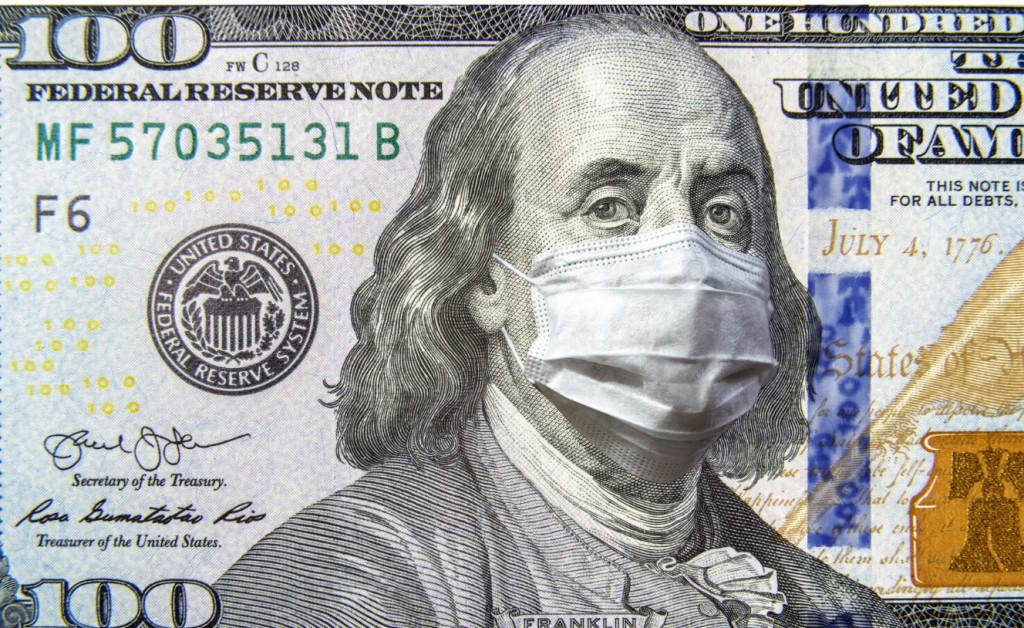
Posts Tagged "Business Strategy"
True Grit- Webinar
True Grit – The Brave Story of How Two Business Owners Executed A Complicated Exit During the Pandemic
Webinar May 25, 2021 2pm-3pm EDT
Enjoy a conversation with real life business owners, Mike Rowlett and Matt Oldroyd, of Womack Machine Supply located in Dallas, Texas. They will discuss how they were able to:
- Secure capital for future growth
- Partially cash out of the company without giving up control
- Manage and reduce the risks
All of which was accomplished in the midst of a global pandemic.
Mike and Matt will tell us all the things they wish they had done differently (as well as some of the things that they did well.)
What you’ll learn:
- Does every deal really “die three deaths prior to closing?”
- What the stress of selling a company looks like
- Actions to take now if you not selling anytime soon.
Register Now

Contact Tim 772-221-4499, to discuss strategies for your business.
Top 25 Tactics to Maximize Your Company’s Value at Exit
Contact Tim 772-221-4499, to discuss strategies for your business.
2021 CEO Summit (Virtual)

What do the US elections and the global pandemic mean for the economy, your company and your wealth in 2021? Register for free to join NAVIX founder and CEO Patrick Ungashick, as he and a panel of experts present their insights, followed by a keynote presentation by Brian Beaulieu, Chief Economist of ITR Economics. For the first time in its more than 15 years, the annual CEO Summit will be held virtually. Registration is complimentary as our guest.
When: Wednesday, February 3, 2021 from 1:00pm to 3:00pm EST
Topics covered will include:
- Strategies for your business in 2021
- Potential tax reform
- M&A markets & company valuation updates
- PPP loans and impact
- Exit strategies
Space is limited, so please register today. Registrants will receive a Video Link to this private virtual event.
Register Now
Contact Tim 772-221-4499, to discuss strategies for your business.
A Holiday Miracle: New PPP Funds, Second Draw Loans & Tax Relief

To help our clients and other business owners and leaders respond to the unprecedented leadership disruptions caused by the coronavirus (COVID-19) outbreak, the team at NAVIX offers the following crisis management information series.
A Holiday Miracle: New PPP Funds, Second Draw Loans & Tax Relief
In a surprising turn of events, Congress and President Trump acted, as part of yet another omnibus COVID relief package, to add new funds into the Paycheck Protection Program (PPP) and override the IRS’s previous attempts to tax PPP loan forgiveness.
Under the new act, an additional $284 billion has been allocated to the PPP program which was first created earlier this year under the CARES Act. The newly passed act also allows businesses that have already received a PPP loan to apply for a second loan under the “Second Draw” provision, albeit under stricter guidelines. To apply for a Second Draw PPP loan, a borrowing company must have fewer than 300 employees (down from 500) and must be able to demonstrate that it experienced a 25% or greater reduction in gross revenue during the first, second, or third quarter in 2020 relative to that same quarter in 2019. Second Draw PPP loans are capped at $2 million compared to $10 million under previous PPP guidelines.
The new act also directly addresses one of the most frustrating elements of PPP since the program was first made available—the taxation of PPP. Under the new act, the good news is PPP borrowers can deduct expenses paid for using PPP loan proceeds that are subsequently forgiven. The provision is effective as of the date of enactment of the CARES Act. The provision provides similar treatment for Second Draw PPP loans. This new law seems to finally close the door on the PPP taxation debate, and overrules multiple efforts by the IRS to assert that taxpayers would not be able to deduct expenses paid for with forgiven PPP loan proceeds.
As with any major piece of legislation, there are important provisions that will impact different taxpayers differently. Business owners and leaders should consult their tax advisors on these recent developments.
The NAVIX team has helped hundreds of business owners prepare for exit. We have also helped countless owners and leaders deal with recessions, liquidity crises, and economic upheaval. Our experience and perspective enable us to guide our clients through difficult times, such as these.
Contact Tim 772-221-4499, to discuss strategies for your business.
Company Sales Rebounding Despite COVID-19
By: Patrick Ungashick

The COVID-19 pandemic brought many aspects of US society and business activity to a halt in March of this year, including sales of small to mid-market companies. Yet already there are signs that mergers and acquisitions activity (M&A) is rebounding for small to mid-market companies, an encouraging development for business owners who seek to exit from their companies by way of sale to an outside buyer. The emerging increases in company sales come after deal value in the US fell by 20 percent in the first half of 2020 to according to PitchBook Data. Deal value declined by one-third in the second quarter alone.
Buyers and sellers are coming back into the market, after pumping the breaks when the pandemic first hit. First, many companies have been largely unaffected by the pandemic. Other companies have adjusted their operations and are returning to profitable growth despite the ongoing public health challenges. Additionally, the upcoming US elections have spurred many business owners to resume exit planning out of fear of tax increases in the future.
Overall, the volume of sales of small to mid-market companies remains below pre-pandemic levels. However, signs point to the need for business owners to be ready to sell as the “window” reopens. In response, we recently published a new whitepaper, “Top 10 Signs You are Not Ready to Sell Your Company,” to assist business owners during these uncertain and changing times. Download a free copy to review if you and your company are ready to sell, or what it takes to get you prepared.
Contact Tim 772-221-4499, to discuss strategies for your business.
How Leaders Inspire Even in a Time of Crisis
I’m sharing a recent Inc. Real Talk Business Reboot Webinar with Simon Sinek.
Learn how to embrace an infinite mindset and strategies to lead your team through these difficult times and into the new Abnormal.

Inc. Real Talk Business Reboot:
Leading Through Times of Crisis and Change
Sinek teaches leaders unconventional ways of thinking, acting, and communicating to help inspire those around them. He believes great leaders are the ones who think long term rather than short term. In today’s ever-changing world, knowing the framework for leadership is more crucial than ever.
Tim Kinane
Please share this with a friend/colleague
SBA PPP How to Maximize and Beyond
I was a guest speaker on the inaugural Small Talk online series for the Business Development Board on Martin county. The interview is from late April and the key points remain valid as businesses transition back to a healthier economy.
The topic was How to Maximize Your Loan Funds. Along with reviewing how to best use SBA PPP funds, we discussed what to consider moving forward.
Key take away points:
SBA PPP Funds:
Keep communication open with banker and CPA.
- Be proactive
- Review options
- Ask questions
- Document expenditures
- Consider immediate and longer-term cash needs
- Multiple cash flows
Keep communication open with vendors:
- Terms
- Vendors are partners- you want them to be there to get you back on track
Businesses are resilient.
Generally, businesses need to find a way to react quickly to an issue or problem.
- How much money is needed
- What is the best way to spend money now
- How to make the next immediate decision
That is great during the time of crisis, but it is important to think future down the line.
Employees
They are the one who helped to build your business to where it is now, they will be vital to re-build your business.
Keep in contact- keep communication open.
Opportunities in times like these
Resilience of people in general, Americans and Small Business
Small Business is the engine that runs this country- Small Business is what will bring the economy back.
- Step back from the problem
- Explore all new opportunities as you move forward
- Challenge employees and help them find opportunities
Contact Tim 772-221-4499, to discuss strategies for your business.
PPP Loan Forgiveness Just Got Easier
By: Patrick Ungashick

To help our clients and other business owners and leaders respond to the unprecedented leadership disruptions caused by the coronavirus (COVID-19) outbreak, the team at NAVIX offers the following crisis management information series.
Responding to Coronavirus: PPP Loan Forgiveness Just Got Easier
On June 5th, the new Payroll Protection Plan Flexibility Act (PPPFA) was signed into law, with the purpose of making it easier for companies with PPP loans to secure loan forgiveness. The new law was passed in response to widespread confusion and criticism surrounding the rules pertaining to loan forgiveness. The new PPPFA law is intended to provide greater flexibility to the loan forgiveness process, in order to help the millions of businesses and their owners survive the economic challenges created by the virus.
The important PPP loan forgiveness changes are:
1. More Time to Spend the PPP Loan Proceeds
The most significant change is that companies now have more time to spend the loan proceeds. Before the new PPPFA law, borrowers had only eight weeks (called the “covered period”) starting upon receipt of the loan to spend the funds. That pressured many companies to spend PPP funds more quickly than would best help them through the coronavirus crisis. Now, borrowers have until the earlier of either: (1) 24 weeks from the loan origination date, or (2) December 31, 2020, to spend PPP funds.
However, under the 24-week covered period, companies will have to maintain the number of FTE employees for about three times longer (24 weeks instead of eight weeks) to maximize loan forgiveness. To help employers address this, borrowers who received PPP funds before June 5th (when PPPFA was signed into law) can opt to remain with an eight-week covered period, if advantageous.
2. More Flexibility for How PPP Proceeds are Spent
The next important change is that the new PPPFA law reduces the amount that companies must spend on payroll costs to qualify for loan forgiveness. Previously, PPP borrowers had to spend at least 75% of the loan proceeds on eligible payroll costs. Under the new law, companies must spend at least 60%. This means that forgivable non-payroll expenses can now be up to 40% of spending, increasing from 25%.
PPPFA also clarifies if borrowers are required to spend a minimum amount of loan proceeds. The new law clearly states that in order to be eligible for any forgiveness, a borrower must spend at least 60% of its total PPP loan proceeds towards payroll costs as defined under the CARES Act. Meaning, a borrower is not eligible for any loan forgiveness if it spends less than 60% of its total PPP loan amount.
3. More Time to Pay Back the PPP Loan
Another critical change is that borrowers now have five years, an increase from two years, to repay the PPP loan. The loan interest rate remains unchanged at 1.0%.
4. Extended Safe Harbor to Preserve PPP Loan Forgiveness
The new PPPFA law expands the opportunities for employers who experience a reduction in employee headcount or wages/salaries to maximize loan forgiveness through several means:
- Initially, PPP provided a “safe harbor” which permitted employers to avoid a reduction in loan forgiveness due to a significant decrease in employment and/or wage levels between February 15 and April 26, 2020, as long as the numbers of employees and employee wage levels are restored by June 30, 2020. The PPPFA extends this safe harbor restoration deadline from June 30 to December 31, 2020, giving employers six additional months to preserve loan forgiveness.
- PPPFA clarifies that loan forgiveness will not be reduced based on an inability to rehire employees if the borrower can document (1) written offers to rehire individuals who were employees of the organization on February 15, 2020; or (2) an inability to hire qualified employees for unfilled positions by December 31, 2020.
- Loan forgiveness will not be reduced for borrowers who are able to document a failure to return to the level of business activity as existed prior to February 15, 2020, due to compliance with coronavirus-related guidance for sanitation, social distancing, or safety requirements from the Health and Human Services (HHS), the Centers for Disease Control and Prevention (CDC), or the Occupational Safety and Health Administration (OSHA) between March 1 and December 31, 2020.
5. Potential Longer Deferment of Loan Repayment
Additionally, PPPFA extends the loan deferment period for many borrowers. Under the previous rules, borrowers could defer loan interest and principal payments for six months (although interest does accrue during the deferment). Now, borrowers can defer payments until the SBA determines the loan amount forgiven for that borrower. Given the new 24-week covered period, and given that lenders have 60 days to act and the SBA has 90 days to determine loan forgiveness, this could significantly increase the deferment period for many companies. However, PPP borrowers cannot just stall filing their loan forgiveness application in order to extend the deferral period. If a PPP borrower fails to apply for forgiveness within ten months after the PPP loan forgiveness covered period (which is now the earlier of 24 weeks from origination or December 31, 2020), the deferment period ends, and the borrower must begin making loan repayments.
6. Payroll Tax Deferral Expanded
Previously, companies that secured PPP loan forgiveness could not defer their employer share of payroll taxes. The new PPPFA law now allows all borrowers that receive loan forgiveness to defer payment of employer payroll taxes under Section 2302 of the CARES Act. (The payroll taxes typically due between now and through December 31, 2020, may be deferred with 50% payable by December 31, 2021, and the other 50% payable by December 31, 2022. Similarly, a self-employed taxpayer can defer paying 50% of his or her self-employment tax that would be due from now through the end of 2020 until the end of 2021 [25%] and 2022 [25%].)
However, keep in mind that this payroll tax deferral is different from the CARES Act employee retention tax credit. The PPP and the employee retention credit are still mutually exclusive, and companies may not apply for one if they use the other.
PPP Loan Forgiveness Application
To secure loan forgiveness, borrowers must complete and submit to their PPP lender the Small Business Administration (SBA) loan forgiveness application. Borrowers should carefully review the 11-page application, and consider the various definitions and options under the loan forgiveness process. Business owners are encouraged to consult their tax and banking advisors.
The NAVIX team has helped hundreds of business owners prepare for exit. We have also helped countless owners and leaders deal with recessions, liquidity crises, and economic upheaval. Our experience and perspective enable us to guide our clients through difficult times, such as these.
Contact Tim 772-221-4499, to discuss strategies for your business.
PPP Funds Replenished – What You Need to Know
By: Patrick Ungashick

To help our clients and other business owners and leaders respond to the unprecedented leadership disruptions caused by the coronavirus (COVID-19) outbreak, the team at NAVIX offers the following crisis management information series.
Responding to Coronavirus: PPP Funds Replenished – What You Need to Know
April 24, 2020 @ 12:00 PM
US federal lawmakers today passed legislation that replenishes the Payroll Protection Program (PPP) forgivable loan program, adding another $310 billion to the forgivable loan program created by the CARES Act in response to the coronavirus crisis. The first found of PPP funding, some $349 billion, was exhausted in 14 days as about 1.6 million US businesses rushed to secure a PPP loan.
Today’s legislation also restocks the SBA Economic Income Disaster Loan (EIDL) programs, adding $10 billion to the emergency grant program and $50 billion for disaster recovery loans. Both of those lending programs were fully exhausted, as US companies seek relief to help deal with the unprecedented challenges presented by the COVID-19 crisis.
If your company did not secure a PPP loan during the first round of funding, consider contacting your SBA-approved bank or other lending organization and completing an application as quickly as possible. Demand for the second round of funding is expected to be even greater than the first round.
If you did successfully complete a PPP loan and either have received your funds or are waiting for the funds to be released, be sure to study carefully the guidelines on the proper use of the funds and how to maximize loan forgiveness.
The following free resources can assist you with PPP and other relief programs available through the CARES Act:
- PPP 40-Frequently Asked Questions – free article
- How to Maximize Your PPP Funds – free article
- CARES Act 11-Point Executive Summary – free PDF download
The NAVIX team has helped hundreds of business owners prepare for exit. We have also helped countless owners and leaders deal with recessions, liquidity crises, and economic upheaval. Our experience and perspective enable us to guide our clients through difficult times, such as these.
Contact Tim 772-221-4499, to discuss strategies for your business.
How to Maximize Your PPP Funds
By: Patrick Ungashick

To help our clients and other business owners and leaders respond to the unprecedented leadership disruptions caused by the coronavirus (COVID-19) outbreak, the team at NAVIX offers the following crisis management information series.
Responding to Coronavirus: How to Maximize Your PPP Funds
Despite widespread stories of a chaotic rollout of the CARES Act Payroll Protection Program (PPP), some of the first companies to apply have received their funds. With millions of eligible companies expected to apply for this forgivable loan program, it will be important to properly utilize any funds your company receives from PPP.
Review the following steps and tactics to comply with the program, maximize the loan forgiveness amount, and provide the greatest benefit to your company. (Note: The US Treasury Department changed several important provisions of PPP while the program was being rolled out, so it is possible that some of the information provided here may change, or that additional guidance may be provided. Business owners must consult their tax, legal, and exit advisors to discuss how this program applies to your specific situation.)
1.Have a plan for how your company intends to use the funds prior to actually receiving them. Once your company receives the funds, an 8-week clock starts ticking. What your company does during this 8-week period determines the loan forgiveness, so it is best to be prepared before the funds are received.
2.Be prepared to carefully document during the 8-week period the company expenses that qualify for loan forgiveness. Your lender will require that documentation to apply for loan forgiveness on your behalf.
3.Create a balance sheet account to keep track of the PPP loan and funds.
4.Deposit the PPP funds into a dedicated bank account. Document as you draw down the funds for eligible expenses to help create a clean audit trail.
5.Carefully monitor how the funds are used, consistent with your plan. To qualify for loan forgiveness, you must use at least 75% of the funds for payroll costs, as defined by the CARES Act. That means you can use up to 25% of the funds for eligible non-payroll costs, which are: rent, interest payments on mortgages, interest on pre-existing loans, and utilities. (Note: For purposes of determining the percentage of use of proceeds for payroll costs, the amount of any Economic Injury Disaster Loan (EIDL) refinanced will be included.)
6.Loan forgiveness may be reduced if either of the following occurs:
a)Employees who made less than $100,000 of compensation in 2019 have their compensation reduced by 25% or more; OR
b)The number of full-time employee equivalents is less than the same number of employees during; either February 15, 2019, through June 30, 2019; OR January 1, 2020, through February 29, 2020—you choose the more favorable period to apply.
(Two important notes here. First, it is unclear at this time exactly how loan forgiveness will be reduced, and we expect further guidance providing some sliding scale. Second, if employee terminations have already occurred, you can hire employees back by June 30, 2020, to still qualify for loan forgiveness.)
7.Avoid utilizing other CARES Act relief programs that nullify participating in PPP, including:
a)The Employee Retention Credit
b)Deferral of Payroll Taxes
8.During the 8-week period that starts immediately after receiving PPP funds, maximize the payment of expenses that qualify for loan forgiveness, for example:
a)Time payroll where possible to maximize payments during the 8-week period
b)Consider paying bonuses to employees who have demonstrated superior job performance during the crisis (remember compensation above $100,000 does not count toward loan forgiveness)
c)Make catch-up payroll payments to any employees whose compensation was reduced as a result of the COVID-19 crisis
d)Make additional or early payments on rent, mortgage interest, or utilities (up to the 25% threshold)
9.Remember that any amount of the PPP funds not forgiven must be repaid within two years, but loan repayment may be deferred for up to six months.
10.There is no penalty for early repayment, but do not rush to repay any loan balance that is not forgiven. Make sure your company’s cash position remains strong until the business crisis has clearly subsided.
11.Avoid any misuse of the funds. Business owners using the funds for fraudulent purposes are subject to criminal charges.
For additional information, download our free C.A.R.E.S. Act Executive Summary, which contains actionable information on the PPP and ten additional major tax, stimulus, and business programs created in response to the COVID-19 public health and economic crisis.

 Tim is a Consultant to Business, Government and Not-for-Profits Organizations specializing in innovative and challenging ways for organizations to survive, to thrive and to build their teams.
Tim is a Consultant to Business, Government and Not-for-Profits Organizations specializing in innovative and challenging ways for organizations to survive, to thrive and to build their teams.